The ProMax Nebulous 3000 Cyber
Our project, “The ProMax Nebulous 3000 Cyber,” sought to address the ethical dilemma of sacrificing one person’s well-being for the greater good, akin to the classical trolley problem. Our objective was to create a companion, a personal assistant, and a moral compass for the citizens of Omelas, all of which were captured in our innovative wing technology. In this documentation blog post, I will first reflect on the successes and challenges encountered during the project, its alignment to my defined form of interaction, and propose potential enhancements.
Successes and Failures
One of the clear successes of our artifact was our ability to use storytelling and performance to convey the moral complexity of the situation. By leveraging the wings to set the child in the basement free, we effectively portrayed our ethical message. Our performance also vividly portrayed the stark contrast between the happiness of the citizens of Omelas and the suffering of the child, prompting the main character to experience a moral dilemma and torn feelings.
However, it is important to acknowledge that our project introduced an unintended complication. While our intent was to highlight the benefits of technology, we inadvertently raised concerns about the fine line between helpful and intrusive technology, or even the potential for AI to exhibit unethical behavior.
Interaction with the Established Form
In my research, I defined interaction as a two-way performance requiring conversation between multiple parties. The most effective interaction, in our context, is when two components actively listen, process information, and engage in dialogue. I believe our artifact, the ProMax Nebulous 3000 Cyber, aligns well with this established form of interaction.
Throughout our performance, we portrayed interactions between the wings, their wearer, and the environment. We gave the wings a voice, enabling the audience to understand the thought processes of the AI technology. When the artifact’s wearer entered a new environment and made a comment about the surroundings, the wings would reply back with a more in-depth analysis of the room qualities. These exchanges showcased the ongoing dialogue between the artifact and its user, making it evident that our project successfully displayed this two-way interaction.
Possible Enhancements
There is most definitely room for improvement and if I were to improve or change our artifact in any way, I would want to consider allowing the wings to work proactively over time, developing solutions and recommendations for the wearer. While the immediate responses during the performance added to its intensity, it might have felt abrupt and lacked sufficient background context. By incorporating a more gradual and thoughtful approach, we could enhance the artifact’s overall effectiveness.
Takeaway
In conclusion, “The ProMax Nebulous 3000 Cyber” served as a platform for exploring ethical dilemmas, the role of AI, and the nuances of human-technology interaction. While it successfully conveyed our intended message, the unintended complication it introduced calls for a reevaluation of its design. Our project demonstrated a rich two-way interaction that aligned with our research definition, but improvements could be made to the timing and depth of the responses.
Critical Analysis of Group D (“The Suit”)
I found that Group D’s performance, “The Suit,” effectively met the criteria of the assignment. Their reenactment of a scene from “The Plague” vividly portrayed how their artifact, the protective suit, would function within the context of the story. By re-enacting the scene where the character gets infected, they explored how the story could have changed if the character had been wearing protective armor. Their creative approach to exploring an alternate scenario was particularly engaging, offering a unique perspective on the story. The use of visual cues, like the character pressing a button, pulls together their concept of an interactive artifact. As for potential improvements, they could consider expanding the performance beyond the assembly of the artifact. While the assembly is crucial for understanding the functioning of the suit, they might enhance the visual experience by integrating some way to automate parts of the assembly process. This would provide a more realistic portrayal of how the artifact operates in the story’s world and could further captivate the audience.
Team Collaboration & The Creative Process
Our team collaboration and creative process were highly effective. We began by organizing our initial meeting where we reviewed existing ideas. Then, during the next session, we brainstormed new concepts, focusing on those that were more feasible for our project. As we shared and discussed ideas, we recognized the potential of combining various elements.
One of my group members proposed an interesting idea that revolved around the concept of a storybook. This book would feature two contrasting sides: one depicting the perfect world of Omelas and the other illustrating the dark basement with the suffering child. Simultaneously, I suggested the idea of creating wings that react to touching or meaningful actions, which we could use to symbolize the act of leaving Omelas. It was a pivotal moment in our brainstorming process when we realized that these two distinct ideas could be combined into a cohesive and meaningful narrative for our interactive artifact. The team enthusiastically embraced this concept, and we collectively decided to run with it.
Our next steps involved regular meetings and a collective effort to craft our artifact. We utilized cardboard and iridescent materials to assemble the wings. One of our team members took charge of constructing the cardboard frame for the storybook, while myself and two others collaborated to add fabric to create a backdrop. Lastly, we worked to paint and decorate the cardboard storybook.
Regarding the script, we came together as a team to discuss the direction we wanted to take. We collaboratively wrote the entire script, ensuring that it resonated with our concept and objectives. Once the script was complete, we moved to the recital hall, where we dedicated ample time to rehearsing our performance, working out kinks in preparation for the presentation day.
Throughout this project, I watched our team dynamics flourish, and we grew significantly closer as a group. The energy within our group was wonderful and cohesive, enabling us to create a compelling project that effectively conveyed our chosen themes and messages.
SCRIPT | The ProMax Nebulous 3000 Cyber
Characters:
- Jennifer- Jenny the child
- Sara- The wing wearer
- Ninj- AI wing
- Leo- Narrator 1
- Jess – Narrator 2/Staff/Citizens
- Sara – Staff/Mother/Citizens
Scene 1 (In Omelas)
Narrator 1:
“This is Jenny, she’s a happy citizen in a happy place, Omelas.” Jenny waves.
“Here in Omelas, everyone is happy.”Jenny walking around.
Jenny:
“Hey, Eric, Andy and Gottfried! What’s up guys?”
Citizen 1:
“Good morning, Jenny! Another beautiful day in Omelas, isn’t it?”
Jenny:
“It sure is! The sun is shining, and everyone seems so content.”
Citizen 2:
“Have you tried the new ProMax Nebulous 3000 Cyber? It’s amazing!”
Jenny:
“I have! It’s like having a personal assistant and more.”
Narrator 1:
“Recently, the citizens of Omelas have gotten their hands on a new piece of technology. Take a look at the ProMax Nebulous 3000 Cyber, our incredible wing.” The wing moves up and down.
“In Omelas, people don’t need Didis because of this. It has transformed the lives of its citizens, offering multifunctional wings that serve as their all-encompassing aides, seamlessly integrating into every facet of their existence.” Pause.
“Jenny’s mother comes to see her.”
Mother:
“Jenny! You’re finally eighteen. I know how much you wanted to see the child and now you finally can!”
Jenny:
“My mom says that our happiness depends on the suffering of a child…” Prepares to go through the door
Scene 2 (In the Basement)
Narrator 2:
“As Jenny steps into the basement, a stinky smell welcomes her. The dimly lit room is small, uncomfortable, and most certainly not suitable for life.” Jenny Goes through the door, into the basement
Jenny:
“Ew. What is this smell? Why is this place so dark? How can it be so small?”
AI Wing:
“Unhealthy air condition, unhealthy air condition, this place is not sanitary, leave immediately”
Scene 3 (Meeting the Child)
Jenny:
“But I want to explore more…” Walks around and bumps into the child.
AI Wing:
“Child detected, Child detected.”
Jenny:
“That’s the child?” Jenny walks up to the child, the child won’t speak
AI Wing:
“Obviously”
Jenny:
“Why is this child so sad? She looks very miserable…”
Child (whispering):
“Help me…”
Jenny:
“Oh I see it now… the price of our happiness.”
AI Wing:
“Indeed, Jenny. The cost of our utopia is a heavy one.”
Narrator 2:
“The wings, sensing Jenny’s torn feelings of empathy and the desire to stay in Omelas, begin to activate regardless.” The wings, sensing Jenny’s feelings of empathy, begin to activate.
Jenny:
“But I don’t want to leave…”
AI Wing:
“But is that fair for the child? According to my moral programming, it is unethical to let the child suffer, even though everyone in Omelas is happy, but based on my calculations and data bases, the best thing to do is to make everyone leave.” AI Wing starts to lift Jenni and flies away, the people flying away.
Jenny:
“But is it fair for the wings to sacrifice the happiness of everyone else?!” Screams and flies away
Citizens:
“Where are we going?? What is happening?? The wings are doing their own thing!” The citizens also start flying away
Narrator 1:
“The child finally leaves the basement and she finally can explore the world of happiness. The end.” The child gets up and walks out to see the world.
THE END
Photos
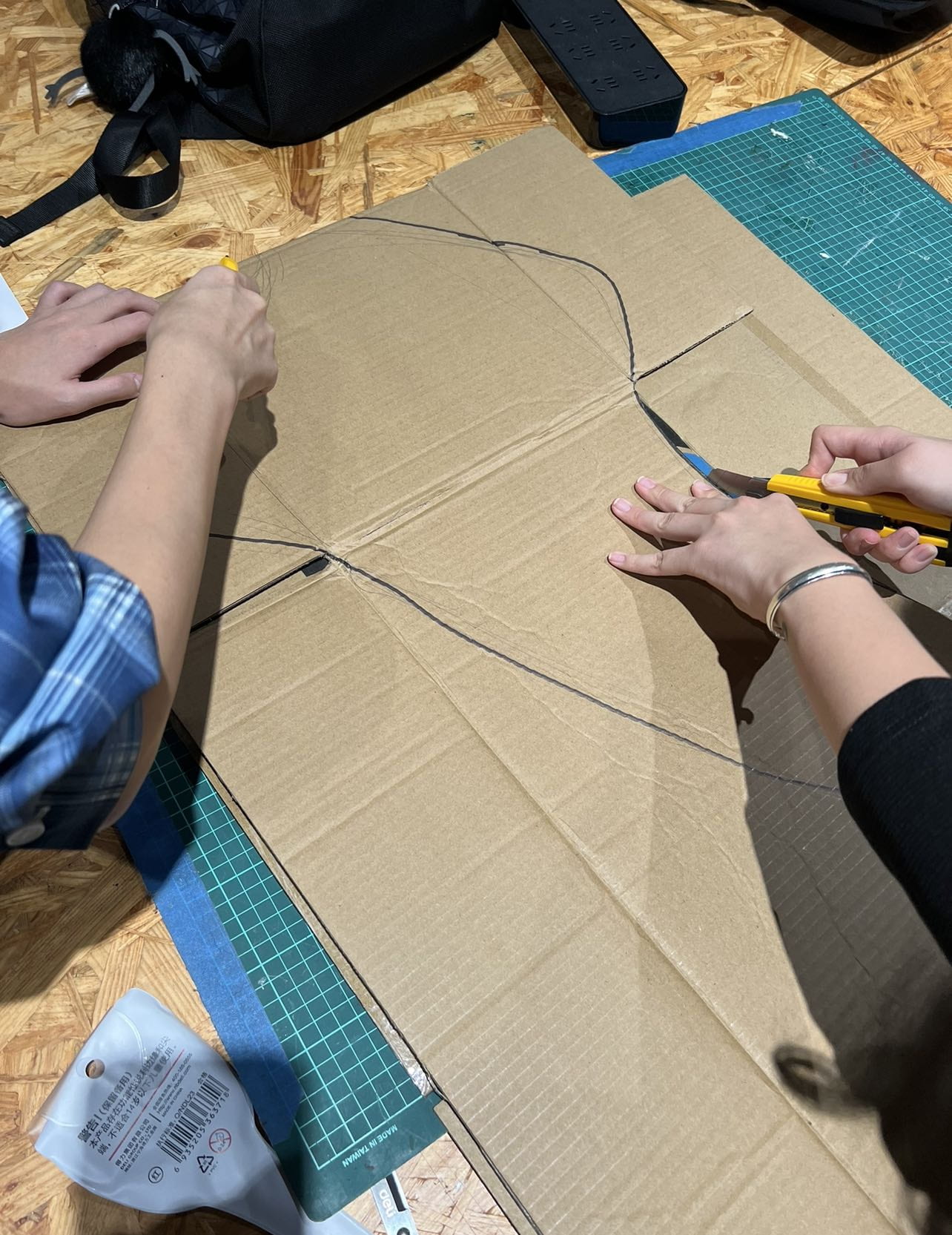
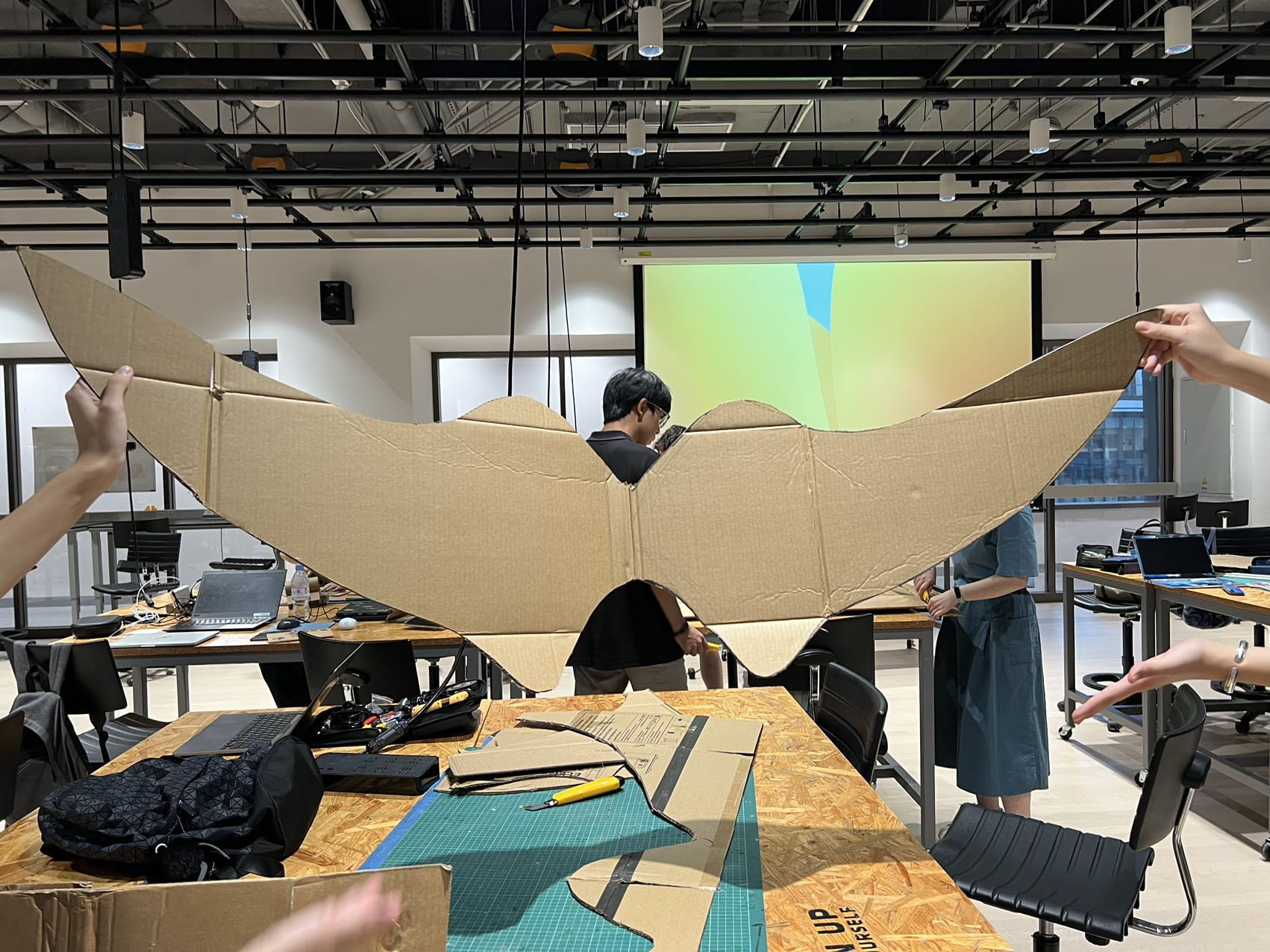
Building Process: Wings
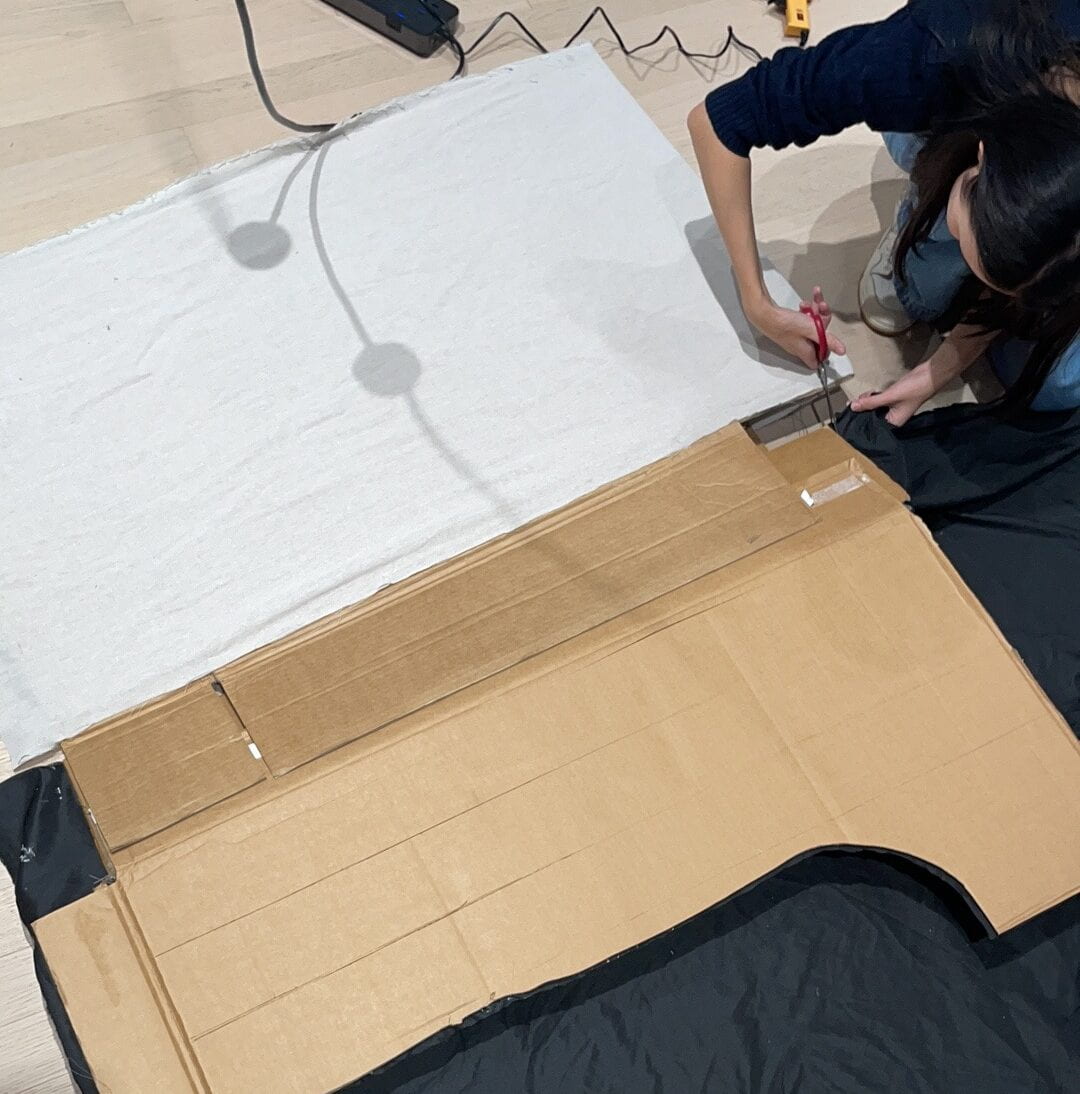
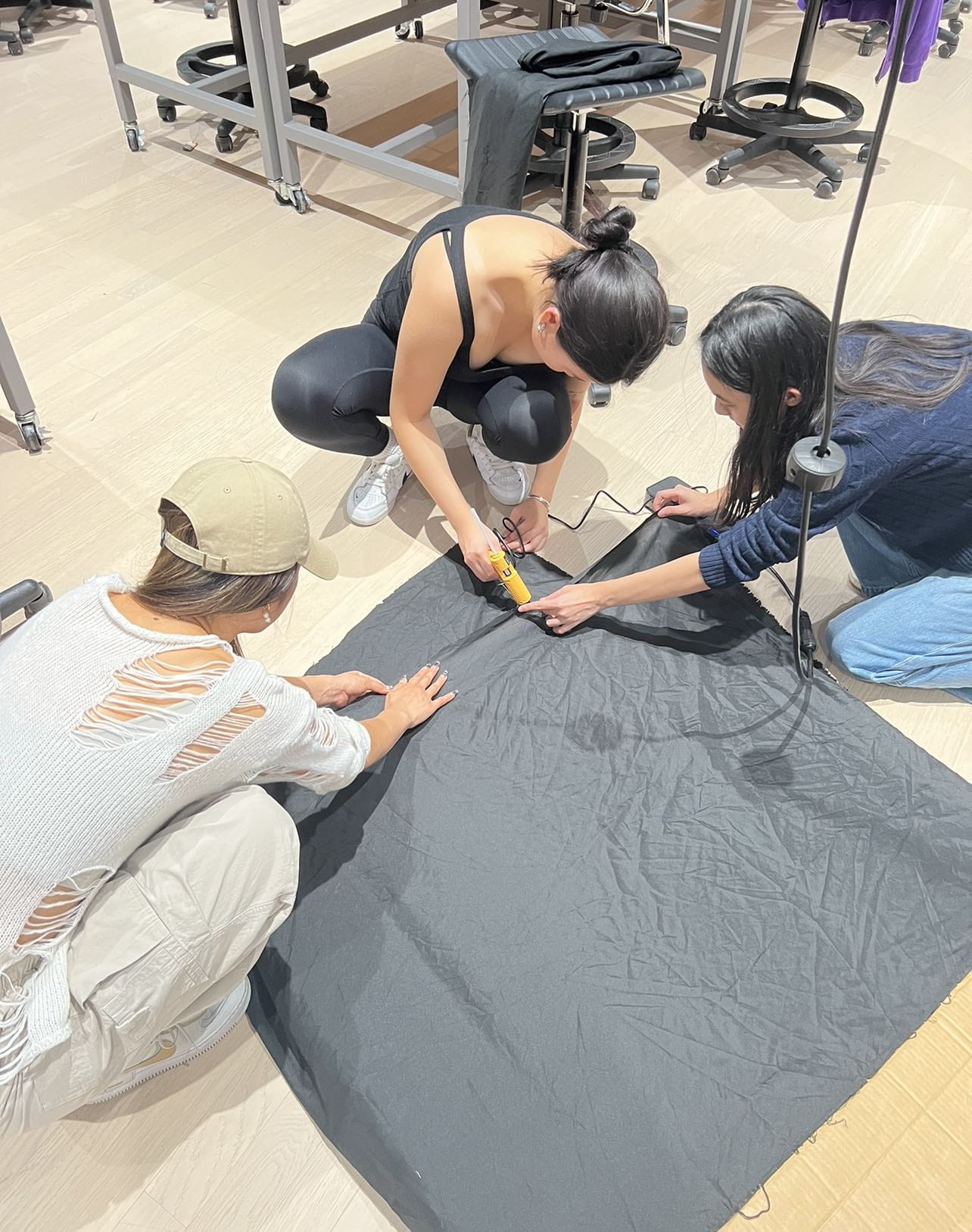
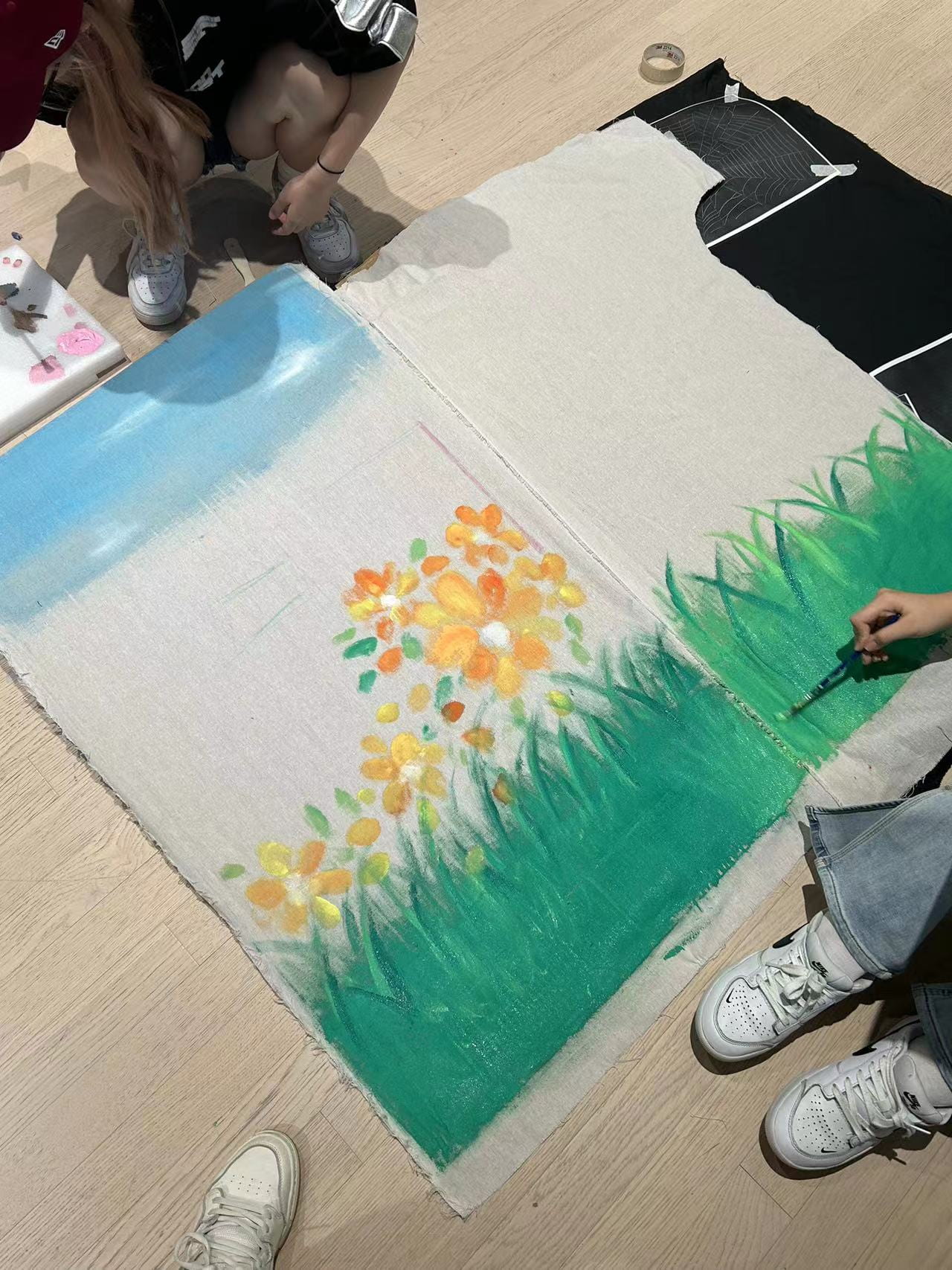
Building Process: Storybook
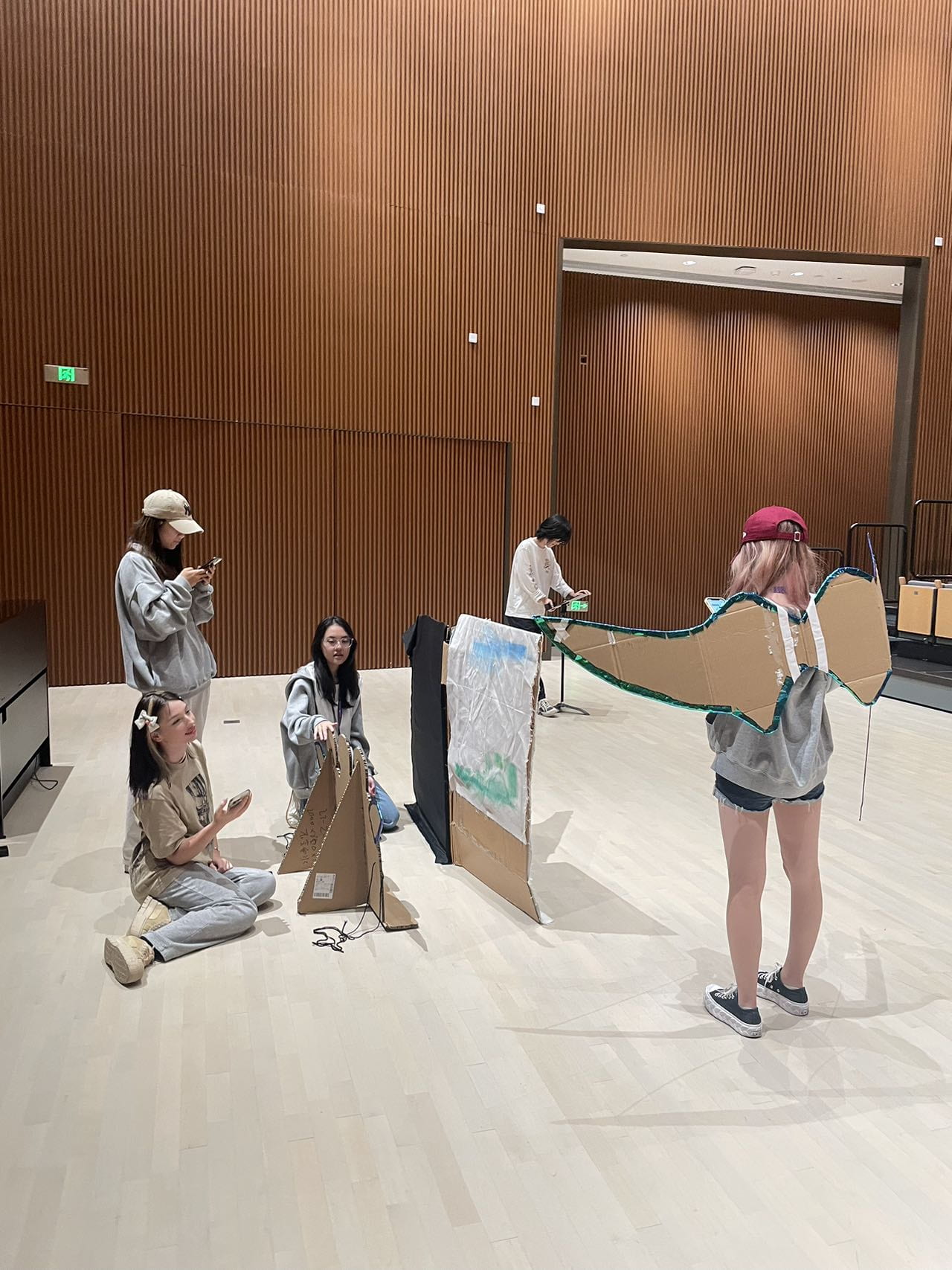
Rehearsal: In the Recital Hall
Backstage: Our Team Cheer Before Presentation
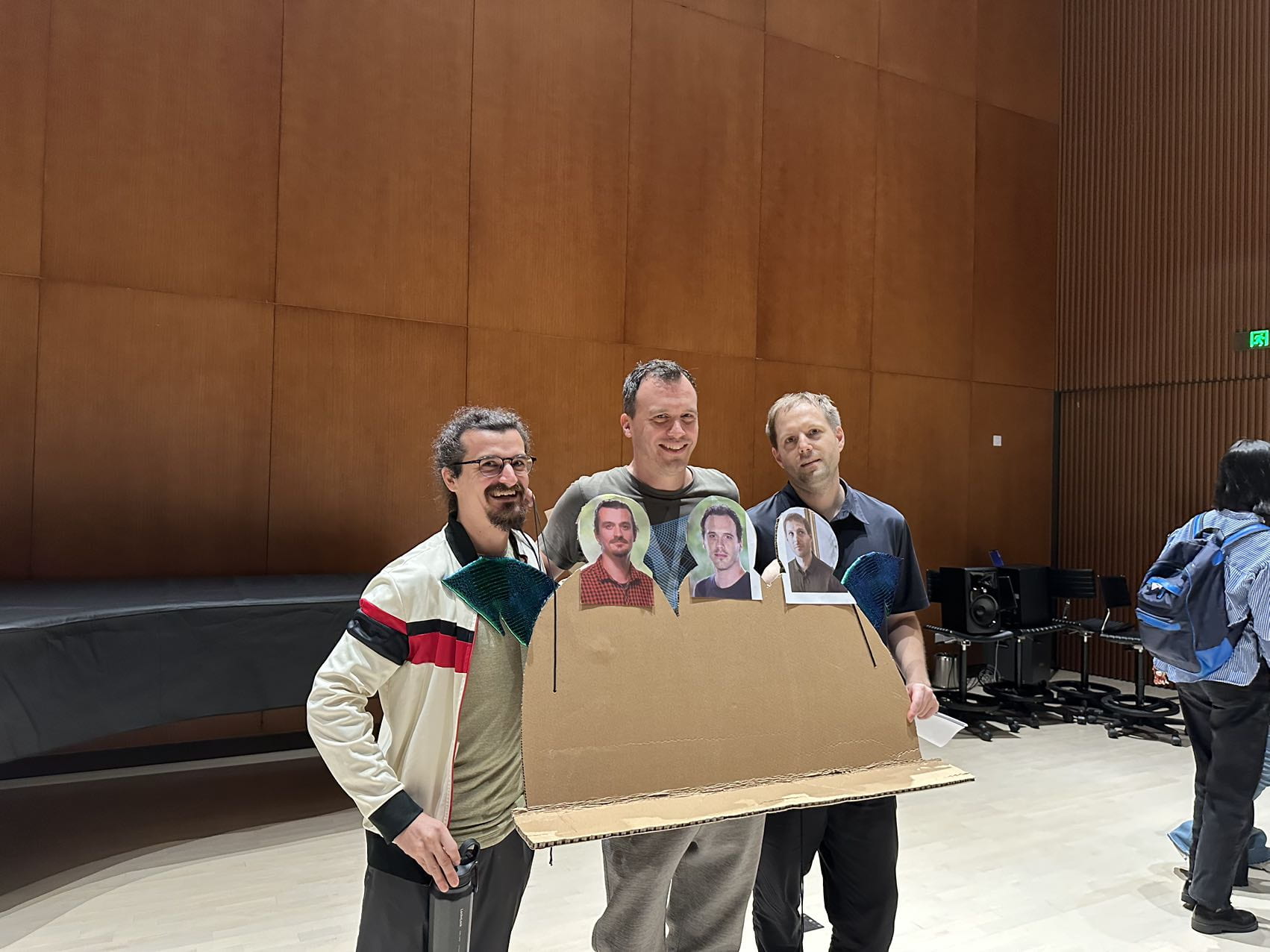
Post-Performance: Our Professors with Project!